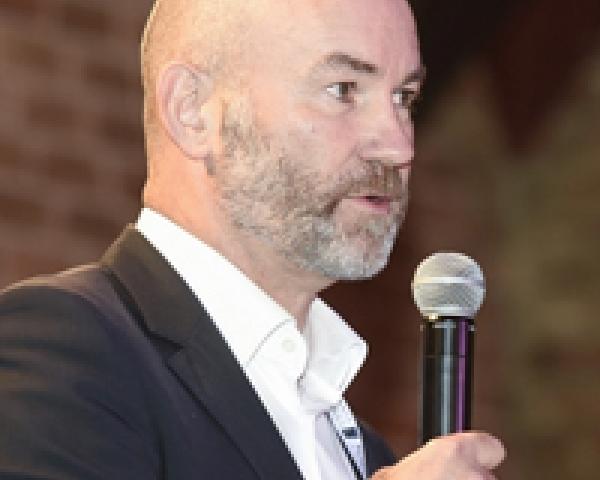Just as all mortgage lenders make sure every homeowner has fire insurance before approving any loan and all new car buyers make sure their auto policy covers their purchase before they drive it off the dealer’s lot, almost everyone acknowledges that protecting against catastrophes is a financial planner’s paramount obligation—if not the first imperative. Life insurance assessments and analysis, consequently, are an intrinsic part of any good and thorough financial planning done for individuals, families or businesses.
The life insurance industry, however, has lacked clarity. Unfortunately, it has not adopted the transparent practices that characterize the financial planning profession, because life insurance largely developed independently from its financial planning industry peers. This has resulted in some agents and financial planners having inadequate knowledge of life insurance matters. This article aims to remedy this by providing agents and financial planners with specific information and approaches for successfully addressing how to obtain good value in a life insurance policy.
Nearly 20 years ago, the Society of Actuaries stated, “Sales illustrations [of life insurance policies] should not be used for comparative policy purposes.” And yet, unfortunately, even today, relatively few life insurance marketplace participants—agents, financial planners and consumers—fully understand this fact and its implications. While there is certainly some awareness that an illustration is not the policy, until illustrations and policies are genuinely and separately understood, obtaining good competitive value in the life insurance marketplace will remain a very challenging endeavor—even for those who prefer term "insurance."
Illustrations of any and all cash value life insurance policies can be made useful, bringing genuine clarity and understanding of these policies to all. From such transformation springs the realization of the critical importance of actually understanding a cash value life insurance policy’s financial mechanics, its operating practices and the insurer’s future financial performance. Given that a policy’s financial performance depends on a series of annual costs and annual rates of returns, there are several ways that financial planners and agents can use the understanding gained from these transformed illustrations. The significance of these changes is manifold: better value for consumers, better product usage, better societal allocation of resources and a transformation in both the practice and the public perception of the expertise, trustworthiness and overall professionalism of those selling and advising about insurance products.
A Review of Cash Value Life Insurance Policy Illustrations and Analytical Approaches
Illustrations show various policy-related values—such as premiums, death benefit and cash values—for every year until the insured’s potential 121st birthday. These pages of numbers, however, are not projections; that is, they are not meant as estimates of future performance. An illustration is simply a snapshot of current or assumed performance; the underlying factors of performance are "illustrated," essentially remaining constant (or as is) over the years. Illustrations are fundamentally nothing but calculations of numerous policy-related values, based on the assumed and largely undisclosed input factors—the underlying factors of performance.
Countless problems have arisen from misunderstandings of the limited nature of illustrations. The sales scandals of the 1980s and 1990s, where premiums did not “vanish” as proclaimed, are well-known examples. In response, the National Association of Insurance Commissioners (NAIC) mandated multi-page illustrations that now contain not only guaranteed and illustrated values but also mid-point values and definitions of terminology. While mid-point values do indicate there is some uncertainty about the “illustrated values,” they do little to foster the necessary and genuine understanding of cash value policies. Many consumers now erroneously think the mid-point values are somehow more likely and more reasonable than the illustrated values.
More problematically, many insurers and agents currently rank policies as competitive or not based on policy illustrations. Misleading conclusions about a policy’s attractiveness are also frequently drawn, for example, from its illustration’s cash value rate of return after 20 years, without simultaneously acknowledging such attractiveness is merely produced by the illustration’s assumptions (and is therefore virtually meaningless in measuring real competitiveness). Moreover, agents—especially when selling whole life and other cash value policies—often use a supplemental illustration like the one in Table 1; they save the NAIC multi-page form, with its text that tediously covers simple matters while ignoring significant ones, for the insured to sign when completing the application. While there is currently no news in the mainstream media regarding problematic life insurance illustrations and sales practices, there are still extensive and serious problems in the life insurance marketplace arising from the use and misuse of policy illustrations and information.
A review of the literature shows that a handful of approaches have been used to try to analyze cash value life insurance policies. The NAIC introduced the interest-adjusted indices in the 1970s, but this approach is inherently flawed. Its attempt to represent (what is at least) a two-dimensional product with one measurement is as flawed as trying to completely describe a rectangle with one measurement. The NAIC measurements are neither a rate of return nor a readily understood cost and are therefore not helpful in the financial world, where costs and rates are the primary concerns. The measurements cannot be used to compare “dissimilar” policies, and, as currently disclosed and implemented, they are based solely on illustrated values.
Some practitioners still use an approach developed in the 1960s by actuary Albert Linton. This approach analyzes whole life policies by making assumptions about the cost of such term coverage and calculating a yield or rate or return on the stream of “net” premiums (net of mortality costs) and the illustrated cash values. On the other hand, Professor Joseph Belth has proposed a policy disclosure approach that relies on applying an individually chosen discount rate to an illustration’s values to calculate yearly costs. Neither Linton’s nor Belth’s approach, given their assumptions, can be called "disclosure," as neither provides an explanation of what really is being illustrated or what really occurred, in the case of an actual policy history. Both approaches are akin to viewing a policy through a funhouse mirror—they show you something, but it is not a truly accurate picture.
Others use homespun analytical approaches, often focusing on one aspect of these three approaches, such as rate of return of cash values or death benefits on premiums paid. Still other practitioners, who advocate viewing cash value policies as packages of options (not an invalid perspective, as almost anything can be viewed from an options perspective, but not a particularly useful one), have then either failed to provide the costs of such bundled products or have erroneously confused analysis of an illustration for analysis of a policy. All such approaches fall short of proper, accurate and complete analysis of a cash value life insurance policy.
 An Informative Illustration: Its Construction and Use
An Informative Illustration: Its Construction and Use
Cash value life insurance policies, while bewildering to many, are fundamentally simple products. Annual costs and compounding rates are the building blocks of these policies and the basic input assumptions that create the illustration. Merely using a whole life policy’s illustration, as shown in Table 1, and its embedded information, as shown in Table 2, presents this whole life policy’s illustrated values in a much more informative way. This informative illustration is constructed by reverse-engineering the illustration’s values. To do so, the illustration’s current values in Table 1 are discounted by the illustration’s assumed dividend rate, and the guaranteed values are discounted by this policy’s guaranteed interest rate. Given that this particular whole life policy was issued in 1989, the then-current illustrated rate was 10%, and the guaranteed rate was 5.5%. Just as it is essential when disassembling a house to take it apart by its components, it is similarly essential in deconstructing an illustration. Only by discounting with the rate used to construct the illustration does one acquire the specific stream of cost assumptions used in the illustration.
In addition to calculating the maximum and illustrated streams of annual costs for the total amount of coverage provided, it is useful to calculate the cost per thousand dollars of coverage by dividing each annual cost by that year’s specific at-risk amount. Only then, after the illustration’s specific stream of annual cost assumptions has been extracted, is it appropriate to use a user-chosen discount rate (in this case 5%) to discount the stream of costs to calculate present value figures, which then can be compared with other similarly calculated figures. And, as will be discussed below, the stream of total annual costs can be disaggregated into its three primary components: (1) sales-related, (2) taxes and (3) claims. The last includes all other non-sales and non-tax costs, such as underwriting and administration, which can be compared with, or expressed as, a percentage of the relevant maximum Commissioners Standard Ordinary (CSO) mortality table figures.
From this straightforward information, users can readily see the input assumptions regarding maximum annual costs, illustrated annual costs, illustrated costs per thousand dollars of coverage and the compounding rate(s) on which the illustration was built. Users can also readily comprehend that the differences between illustrated and guaranteed values are a function of: (1) the differences between the guaranteed and illustrated annual costs and (2) the differences between the guaranteed compounding rate and the illustrated rate applied to cash values. This informative illustration perspective does not prevent or preclude a more traditional approach in which an illustration might be re-run at a lower interest rate or be “mentally modified” to adjust for seemingly favorable and unrealistic mortality costs. Similarly, it does not prevent or preclude any practitioner from conducting any conventional rate-of-return analysis, such as a rate of return that the cash values provide on the premiums, which is simply a netting of the impact of insurance costs out of the illustration’s rate.

This perspective provides a more structured, straightforward and simple framework from which to make, disclose and analyze policy features. For example, Table 2 shows that the insured in a whole life policy, belying common agent misrepresentations, does not pay for a lifetime of coverage upfront and that the annual costs of coverage continue to increase as the insured ages. Table 2 could be amended to include any other Table 1 values, such as dividends. Table 2 brings a transformative understanding to the otherwise opaque NAIC and traditional illustrations. The illustration is shown to be the consequences of its assumptions, and those assumptions are revealed.
When a client buys a cash value policy, she is actually buying the insurer’s operating practices and future financial performance, not the illustration. Again, the illustration is not the policy; demystifying the illustration leads to a vivid understanding of this fact. When consumers and planners fully understand the mechanics of an illustration—that it is based on assumptions regarding annual costs and compounding rates—they are motivated to demand information relevant to assessing such matters for the actual policy. Insight and understanding lead to inquiry.
While no decision should ever be based on a sales illustration itself, by demystifying conventional illustrations, the informative illustration shines the spotlight on the input factors that are worthy of evaluation. Policy illustrations no longer remain simultaneously alluring and bewildering. Moreover, when the product’s factors of performance are revealed, they can be evaluated. Obviously, such evaluations require knowledge of financial benchmarks
of attractive performance, which can be assembled from various sources of financial information. While reviewing such approaches is outside this article’s scope, one common approach to assessing future performance is reviewing (correctly, and with all the appropriate caveats) the competitiveness of past performance.

 An Informative Illustration of Historical Policy Performance
An Informative Illustration of Historical Policy Performance
Policy comprehension dramatically expands when historical performance is presented on a year-by-year basis, as shown in Table 3 for the illustrated whole life policy. (Again, the policy illustrated in Table 1 was actually a current illustration for a whole life policy sold in 1989; that is how its historical data is now available.) The historical performance shows that the insurer’s dividend rate declined over 20 years and that its actual costs were less than those originally illustrated. This combination of presenting an informative illustration, as shown in Table 2, with the historical information in Table 3 enables marketplace participants to readily comprehend policies and to ask various relevant and necessary questions. For instance, the illustrated 10th and 20th years’ costs were, respectively, $1,230 and $3,100, while in actuality they were $919 and $1,601. Table 3 clearly suggests an attractive policy must provide competitive performance with respect to both cost and rate components.
Again, actual historical policy performance, like any performance, needs to be assessed and understood in context and comparatively; that is, with knowledge of how it was achieved and how it compares with competitive alternatives. Table 3’s format clearly facilitates such comparisons, and many parties—life insurers, regulators, insurance professors, financial publishers, journalists, agents and planners—could play valuable roles in assembling the benchmark information necessary to conduct such comparisons.
The comparison of two policies’ actual performance data shows even more thoroughly the real value of the informative illustration format with its emphasis on policy performance factors. Policy XYZ in Table 4 has, especially over the last several years, significantly greater costs and significantly lower cash value returns. While applying historical performance data should only be done with a full understanding of its limitations (future investment performance being independent of past performance and its possible inapplicability to new products), this comparison provides useful and powerful information regarding policy replacement questions.
Three important observations regarding this policy’s actual financial performance should be noted. First, this policy’s actual financial performance, along with that of all the insurer’s other policies, can be reconciled with the insurer’s actual financial performance—as reported in its annual statement filed with the regulators. Admittedly, sufficiently precise reconciliations can be tediously challenging exercises in data collection and analysis, but, in contrast to some practitioners’ mistaken beliefs, they are hardly impossible. Second, attempts to misrepresent how a particular policy’s historical performance was achieved are largely self-defeating. For example, trying to overstate the policy’s average historical annual rate of return also overstates annual costs, thereby undermining the objective of the attempt to overstate the rate, and can prove irreconcilable with company financials and its other policies’ performances. Third, financial performance on publicly marketed products is not proprietary; preserving the secrecy of such information in the life insurance marketplace merely forces consumers to unwittingly bear the costs and consequences of non-competitive policies.
Comparing Cash Value Policies With Buying Term and Investing the Difference
When life insurance policies are understood as nothing but the functioning of a stream of costs, rates of return on cash values, the insurer’s operating practices and cash value policies’ tax privileges, it becomes relatively easy and straightforward to compare cash value and pure term policies and to help clients understand these alternatives. While many insurers and agents produce illustrations that compare a whole life policy with buying term and investing the difference (the BTID alternative), most comparative illustrations do little to facilitate a consumer’s comprehension of the causes of the underlying differences.
Suppose, for example, that a 43-year-old female client wants $1 million of life insurance coverage until age 63, and she is interested in assessing which alternative (a whole life policy or buying term and investing the difference) provides the best value over this 20-year duration. Table 5 shows the usual comparative illustration values, but it does so with the death benefits omitted (simply to save space, as they could be equal or immaterially different), and assumes the side fund grows without taxes until the end of each analyzed duration.
For the whole life policy, Table 5 also shows the illustrated annual costs, as these reverse-engineered figures are necessary to calculate and to explain the differences in after-tax values shown in Table 6. Table 6 shows that once the whole life policy’s cash value exceeds its cost basis, the differences in after-tax values between these two alternatives depend on three specific and quantifiable factors: (1) the value of the term cost tax shield, (2) the value forgone by any possible greater annual costs of the cash value policy and (3) the differences between the rate of return assumptions in the two alternatives—all calculated applying simple formulas to the basic input data. No significance should be attached to this particular table’s results.

This analytical perspective and formula bring clarity to the age-old dispute between whole life and the BTID alternative. This dispute is not an ideological matter, rather an empirical one. In particular, the 20th year’s $6,509 after-tax advantage of the cash value policy as shown in Tables 5 and 6 provides no basis for generalization, because its advantage can be seen as arising strictly from its assumed inputs, which, given the assumed difference in rates of return between the cash value policy and the separate side fund (6.5% versus 4%), might well be deemed unrealistic or unjustified. But, again, the numbers in the example have been chosen simply for educational purposes of showing how the formulas work. Table 6’s analysis facilitates comprehension of the reasons why one alternative or the other in any comparative illustration appears superior. This comprehension, just like the above comprehension of an illustration, leads to natural follow-up questions regarding the real-world performance factors of the two alternatives.
The advantages of a cash value policy do not arise from its somehow avoiding the ever-increasing costs of coverage as the insured ages. Similarly, cash value policies do not inherently constitute unattractive investment vehicles (the historical investment-related performance in Table 3, where the whole life policy’s average annual rate of return over the recent 20-year period was 8.43%, certainly shows much conventional disparagement can be erroneous and misguided). This presentation can be useful in confronting the misinformation that has been promoted by advocates on both sides of the dispute between whole life and term. As is so often the case with contentious issues, they can be readily resolved and dispelled with facts.
The fundamental advantages of traditional cash value life insurance arise from the product’s tax advantages. These advantages are free, non-proprietary inputs, which, in a properly functioning marketplace, cannot be used to extract value from an informed consumer. While whole life was created long before our current tax system, and while some of its sales agents prefer to pretend that it is not composed of term insurance, such pretensions in light of the above analysis will be futile. Whole life’s components and operational aspects are subject to mathematical analysis just like all other financial products. This analysis strongly suggests the industry’s practices of paying large commissions for the sale of whole life and other cash value policies cannot be sustained in a marketplace of informed consumers. It also shows that assessing the competitiveness of any recommended life insurance policy, even a term policy, requires taking into account the tax advantages of a competitively priced cash value policy. The lowest-cost term policy over 20 or 30 years may not actually be the most competitive product on an after-tax cost basis—the most important basis on which to assess costs.
The costs of life insurance products comprise the following very basic components: sales-related costs, premium-related taxes and claim costs—which include all non-sales and non-tax costs, such as underwriting expenses, administration and profits. Of these component costs, some are subject to greater competitive pressures than others. For instance, while premium taxes are set by statute, and claims are largely a function of underwriting standards and policyholder persistency, sales-related costs are potentially much more subject to market forces. The whole life policy shown in Table 3 actually had total cost over 20 years of $20,195, or $83.70 per thousand dollars of coverage (costs measured on a present value basis using a 5% discount rate). Of these costs, approximately 11% were for taxes paid by the insurer, 42% were for claims, administrative costs, etc., and 47% were sales-related. Clearly, when the transparency provided by the informative illustration becomes pervasive, cash value policies with lower-than-traditional sales loads become increasingly attractive.
Summary
Current policy illustrations do not facilitate comprehension of a policy’s financial mechanics. Problems have been identified with widely used policy analysis approaches (the NAIC’s, the Linton yield, Belth’s and others). An informative illustration was created from a commonly used illustration, transforming it by revealing its inherent cost and rate assumptions. From such understanding, consumers’ demand for relevant additional information naturally rises.
Disclosure of life insurance, like that of virtually any financial product, has fundamentally been a two-step process: (1) provide a description of how the product or illustration works, and (2) provide performance information so one can assess and search for competitive performance. The informative illustration shown in Table 2 achieves the first step. Tables 3 and 4 provide examples of some of the necessary performance information to complete the second step.
Using the analytical framework of a policy’s financial mechanics—as a system with a stream of annual costs and annual rates of return—a comparison of whole life with the alternative of buying term and investing the difference brings meaningful insight to this age-old controversy. No one should buy a financial product they do not understand.
For clients’ in-force cash value policies, planners can transform any insurer-provided illustration into an informative illustration and should certainly do so for any contemplated new purchase. Then, planners can engage in financial analysis of life insurers’ operations to assess the likely competitiveness of the insurer’s future performance and that of its policies. These steps enable financial planners and agents to provide better advice to their clients and help clients better understand life insurance matters.
Practitioners usually do not assess the financial performance of life insurers’ policies with anything similar to the sophistication of financial analysis routinely applied to equities, bonds, mutual funds or other important financial products. Now, however, financial planners and agents who understand the vital role risk management plays in financial planning but have been unsatisfied by non-transparent insurance products can apply the analytical structure of an informative illustration to motivate and facilitate their work.




 The result is Atidot, which in Hebrew means, “fortune telling.”
What’s the problem?
Dror explained it to me:
“Insurers (or rather, actuaries) are not doing all that they could with the data they have. And there are several reasons for this.
“First, they miss the point, Insurers look at data from a statistical perspective and miss out on the insights and perspectives that can be seen from different points of view.
“Next..., the traditional modeling tools that are still being used today are cumbersome, difficult to re-model and rely heavily on manual effort. With new sources of data now available, these tools are simply inadequate to handle them.
“And third, they’re too slow. The frequency of updating the models is too long, measured in weeks and months. This is because many of the current tools are limited in scale and flexibility, unable to cater for the huge volumes of data now available to them.”
How is work done today?
Today, insurers think about key questions to ask prospective policyholders. Do you smoke? Do you drink? Do you have diabetes? What is your gender? What is your location?
Insurers map the customer’s answers onto a statistical table. This linear modeling approach provides a risk rating of a certain outcome, such as the mortality rate for a life product.
But data science does not follow a linear model. It is different and varied. Data is modeled to show different correlations of risk to key variables.
This is what Atidot does.
It applies multiple approaches simultaneously to process a much larger set of data. This will include existing data that was previously ignored, such as the day of the month the salary is paid or frequency of ATM withdrawals, through to new sources of data, such as driving behavior or activity levels.
And while it is still very new for insurers to link, for example, increased levels of activity to mortality rates, there is enough evidence to suggest that it is just a matter of time before they do. You only have to look at the number of competitions on
The result is Atidot, which in Hebrew means, “fortune telling.”
What’s the problem?
Dror explained it to me:
“Insurers (or rather, actuaries) are not doing all that they could with the data they have. And there are several reasons for this.
“First, they miss the point, Insurers look at data from a statistical perspective and miss out on the insights and perspectives that can be seen from different points of view.
“Next..., the traditional modeling tools that are still being used today are cumbersome, difficult to re-model and rely heavily on manual effort. With new sources of data now available, these tools are simply inadequate to handle them.
“And third, they’re too slow. The frequency of updating the models is too long, measured in weeks and months. This is because many of the current tools are limited in scale and flexibility, unable to cater for the huge volumes of data now available to them.”
How is work done today?
Today, insurers think about key questions to ask prospective policyholders. Do you smoke? Do you drink? Do you have diabetes? What is your gender? What is your location?
Insurers map the customer’s answers onto a statistical table. This linear modeling approach provides a risk rating of a certain outcome, such as the mortality rate for a life product.
But data science does not follow a linear model. It is different and varied. Data is modeled to show different correlations of risk to key variables.
This is what Atidot does.
It applies multiple approaches simultaneously to process a much larger set of data. This will include existing data that was previously ignored, such as the day of the month the salary is paid or frequency of ATM withdrawals, through to new sources of data, such as driving behavior or activity levels.
And while it is still very new for insurers to link, for example, increased levels of activity to mortality rates, there is enough evidence to suggest that it is just a matter of time before they do. You only have to look at the number of competitions on  By enabling multiple data models to run simultaneously and picking the best model to better understand customers, Atidot drew a relationship between data that the actuary didn’t have before. Nor would the actuary have intuitively thought of it or arrived at it through a linear modeling approach.
So, is this enough to change the way insurers rate risk? Or change the risk selection criteria for an insurer?
To answer this I turned to
By enabling multiple data models to run simultaneously and picking the best model to better understand customers, Atidot drew a relationship between data that the actuary didn’t have before. Nor would the actuary have intuitively thought of it or arrived at it through a linear modeling approach.
So, is this enough to change the way insurers rate risk? Or change the risk selection criteria for an insurer?
To answer this I turned to 
















